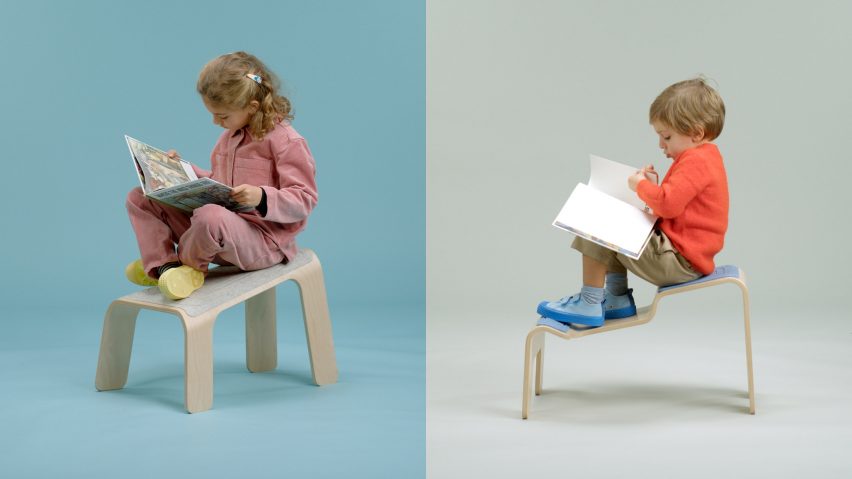
Studio Lentala designs playful children's chairs to "enable active sitting"
Amsterdam-based Studio Lentala has designed the Rom & Lupa chairs to improve children's physical and mental health.
Named Rom & Lupa, the seats were designed to provide active sitting solutions following research by the studio that showed the negative impact passive sitting has on the physical and mental health of children.
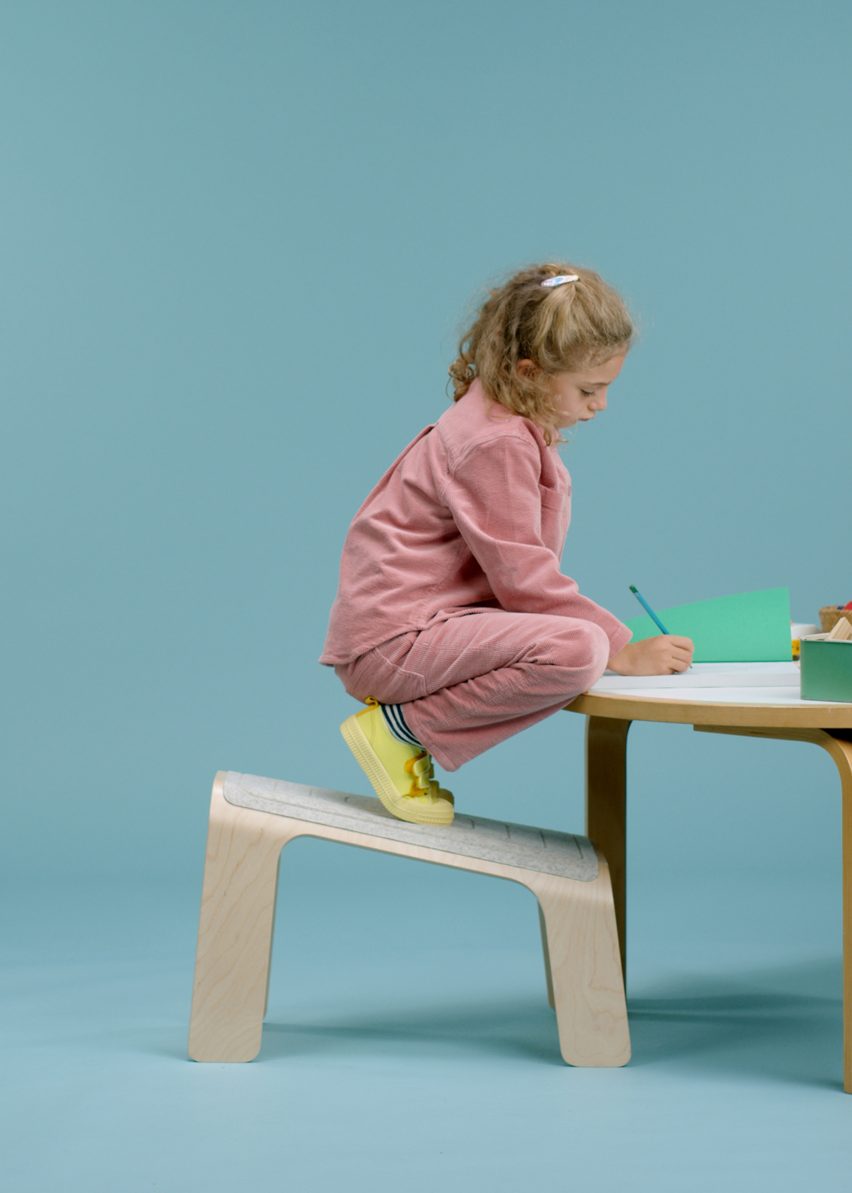
"Chairs shape our daily movement patterns, limiting our bodies to very few sitting postures and leading to us missing out on gentle muscular diversity," said Studio Lentala founder Boris Lancelot.
"The result is a negative cycle where inactivity leads to poor physical fitness, poor health and low self-esteem," he told Dezeen. "For these reasons, some have called sitting the new smoking."
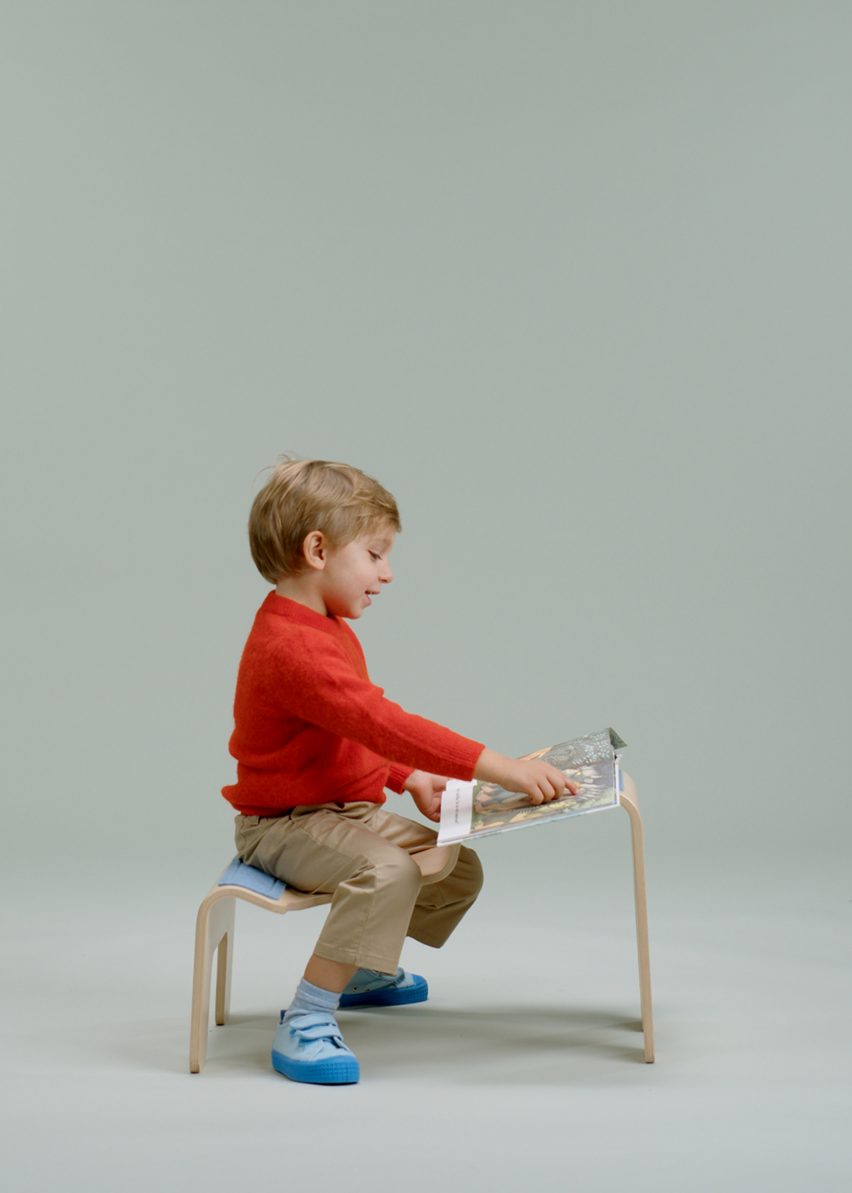
According to the studio, our bodies are able to take more than a hundred sitting positions, which are embraced in other countries including Japan and Indonesia.
This encouraged Lancelot to investigate ways to implement those practices into Western sitting routines, resulting in the design of Rom & Lupa.
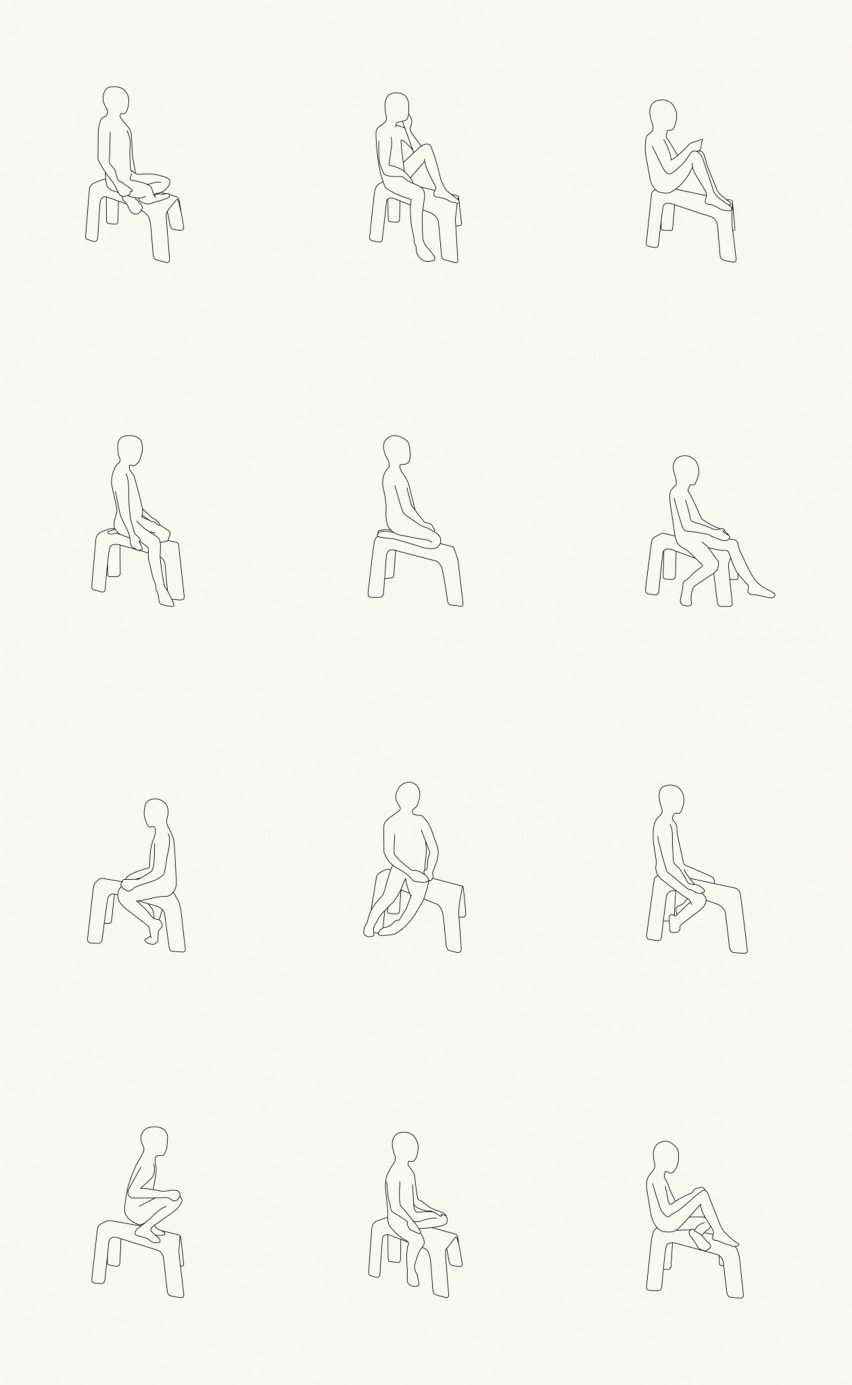
"In non-Western cultures, people exercise a much wider range of sitting postures in their daily life exposing their bodies to consistent gentle muscular activity which is vital for our social and physical development," Lancelot explained.
"The Rom & Lupa seats enable active sitting in a largely unconscious way since they are designed so that after a while each posture becomes slightly uncomfortable, which encourages the child to shift regularly between sitting postures," he continued.
"In other words, the design philosophy deliberately seeks to make sitting an activity"
The studio worked with movement scientists, Simon Caljouw, an assistant professor at the University of Groningen and John van der Kamp, an associate professor at Vrije Universiteit Amsterdam, to create the chair to allow freedom in mobility for school-aged children.
The resulting chairs – Rom that has a sloped seating platform and Lupa that has two felted areas connected by a lowered central section – encourage children to alternate between a range of eight sitting positions.
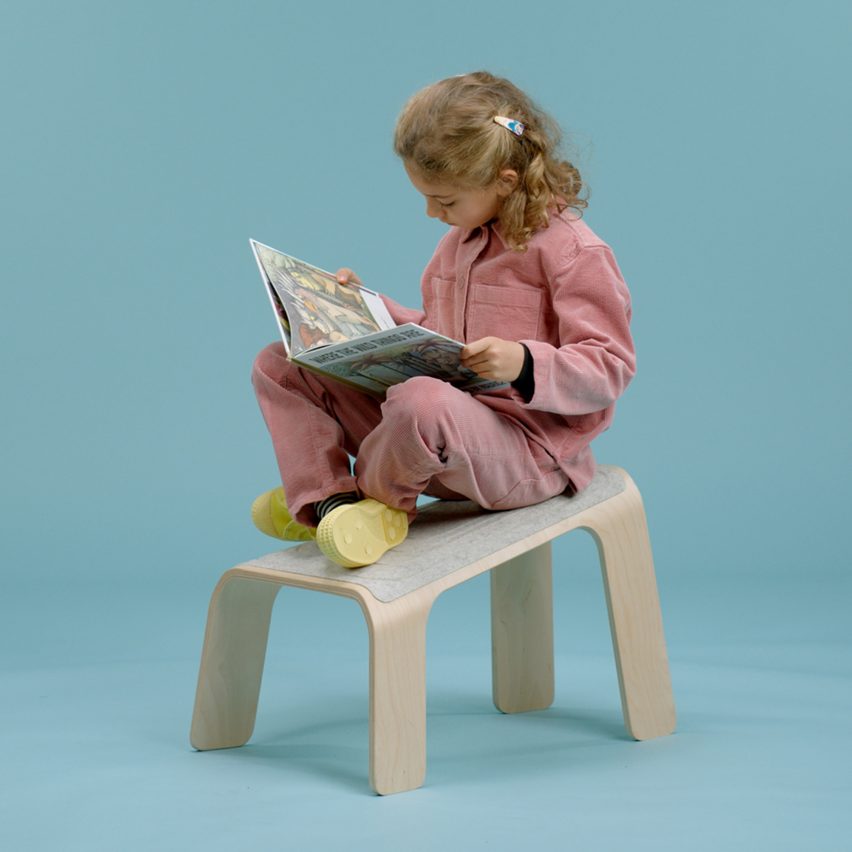
"The two Lentala kid's seating designs are unique because they offer a range of at least eight different sitting postures, inviting children to explore these and additional possibilities," said Lancelot. "No posture is more desirable and each child can adopt postures that fit their needs and body."
"To enable wider variation in postures, the chairs are designed according to the 'principle of variation'. These selected postures are based on the most common universal sitting postures of all cultures and times,"he continued.
"The selected postures of the design come from testing positional changes.Designing a seat that serves the body involved an intuitive design process that took shape through physical sensation and experimentation."
Rom & Lupa were crafted from FSC-certified birch and topped with natural woollen felt.
"We aim to design for both healthy lifestyles and a healthy planet by using natural and renewable materials," Lancelot said.
"Sourcing birch wood from the nordics, the Lentala kids furniture pieces are produced in the Baltics where the birch veneer is also from."
Other seating designs recently featured on Dezeen include two oversized chairs made from steel and fibreglass designed by Yinka Ilori for an installation in east London and four benches which were installed throughout the Royal Docks as part of this year's London Festival of Architecture.